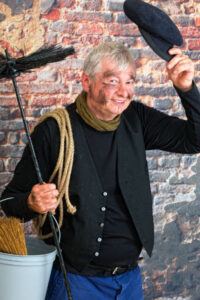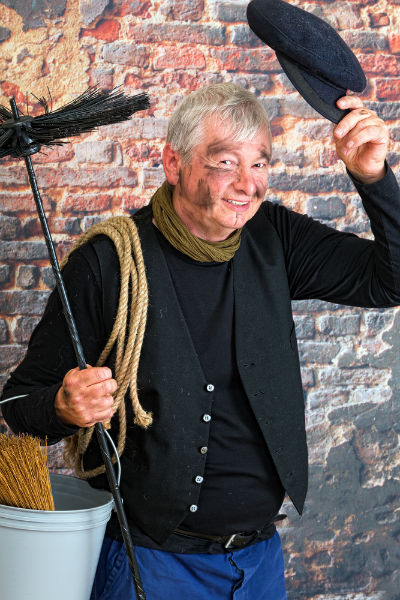A chimney sweep cleans and inspects fireplaces and chimneys. Some also work on flue liners.
Some chimney sweeps show debris to homeowners as proof that the liner is broken, so make sure you get a second opinion if someone tries to frighten you. Visit https://chimneysweepcharleston.com/ for more information.
This job requires a certain level of physical fitness and an ability to navigate in tight spaces. You’ll also spend time on the roof performing inspections.
Chimney sweeps clean chimneys, fireplace flues, ducts, and venting systems to remove dangerous tars and gases from homes and businesses. They also advise homeowners on proper fire-burning techniques to reduce the soot and gas emissions risk. They follow specific guidelines and procedures to clean every aspect of the chimney thoroughly.
Many sweeps also provide masonry chimney and lining repair, firebox and damper repair and tuckpointing services. They may also conduct chimney pressure testing to determine whether there are any leaks that could allow flammable smoke to enter the living space.
They may be required to climb ladders and crawl into tight spaces. Chimney sweeping can be physically challenging, especially if you are predisposed to back pain or other repetitive-use injuries. You will need to be flexible and strong enough to navigate these confined areas while carrying a tool bag, vacuum cleaner, ladders and other equipment.
Often, chimneys will become infested with debris such as bird and bat droppings, insects, raccoons, birds’ nests and other pests. These contaminants may lead to toxic exhaust gas leaks. In addition, chimneys that are not cleaned regularly can become blocked by debris or a chimney cap that is damaged and allows toxic gas to escape into the living space.
Chimneys may be infested with creosote and other flammable deposits. These deposits build up over time and prevent a chimney’s cross-section from remaining large enough to direct exhaust gases away from the living space. A poorly functioning chimney can result in soot staining and a black film that covers furniture and other parts of the home.
Chimney sweeps also inspect fireplaces, removing and installing chimney caps and liners, wood stoves and other heating appliances. They may also test chimneys to determine if they are properly ventilated. They may be required to attend seminars and other meetings organized by professional and industry associations. Some sweeps apply for certification by the CSIA or membership in the NCSG to demonstrate professionalism and commitment to safety. This can be a selling point when seeking new clients. They are typically self-employed, although some work for solid fuel distributors.
Training Requirements
Chimney sweeps must complete a training program, pass an exam and earn the right to work on chimneys. They also must abide by certain guidelines and best practices. The qualifications that chimney sweeps need vary by region and the trade association to which they belong. They need to have a general understanding of fireplaces and chimneys, including the types of fuel that are used in them, fire safety and how to clean and inspect them.
Many chimney sweeps are certified by the Chimney Safety Institute of America, or CSIA. The CSIA has a code of ethics that its certified sweeps must follow, as well as a series of requirements for continuing education. The CSIA offers courses that teach the basics of chimney sweeping, as well as how to properly inspect a fireplace and chimney.
As part of the training, a chimney sweep must be able to communicate with customers about fireplace and chimney safety. This includes explaining how to prevent chimney fires and why they should have their chimneys swept. It is also important that they know how to correctly inspect a fireplace, chimney and flue pipe for any signs of damage or deterioration.
The job of a chimney sweep can be dangerous, so it is essential that a candidate is physically capable of working in the field. A chimney sweep often works in small, tight spaces, such as a crawl space, so it is necessary to have good balance and be able to climb. This job can also require a great deal of walking, so a person should be in fairly good physical shape.
Depending on the state, a chimney sweep may need to be licensed or certified by a local authority. This is because there are certain tasks that can only be performed by a licensed professional, such as repairing a damaged chimney liner or constructing a new chimney.
The most important step in becoming a chimney sweep is to shadow an experienced one for a few days to get a feel for the profession. This can be done by contacting a sweep in your area who is willing to let you tag along for a few days. Some sweeps offer this service free of charge, and it is a great way to make sure that you are committed to the career before investing in equipment.
Physical Requirements
Chimney sweeps must have a good physical condition. They work outdoors and spend much of their time climbing ladders, walking on roofs and peering into chimneys. They also may spend several hours a day standing in confined spaces such as crawl spaces, closets and attics. A person who is claustrophobic or has trouble breathing in tight spaces should consider other career options.
Being comfortable with heights is another requirement. Chimney sweeps often must climb ladders and walk on roofs to conduct inspections of fireplaces and heating systems. Some chimney sweeps have to enter homes and go on the roof, so it is important for them to be able to stay upright and move around safely while wearing their protective equipment.
The physical demands of the job may be tiring, so it is important that a chimney sweep takes frequent breaks during his workday. He should also wear non-slip shoes when working on slippery roofs. He should also check the stability of ladders before stepping on them and always double-check to see that they are secured by eye bolts. Chimney sweeps also need to be able to carry heavy equipment, including brushes that remove soot and creosote from the inside of a chimney, power vacuums for cleaning debris and other tools, chimney caps and spark arrestors to prevent chimney fires and specialized equipment for inspecting a chimney’s interior.
Many chimney sweeps are self-employed, so they must have a reliable vehicle to transport their tools and supplies. They must also have a valid driver’s license, a clean driving record and pass a pre-hire drug screening. They should also be prepared for overtime during peak season and be able to handle the stress of long hours at a time above ground level.
It is essential for a chimney sweep to be honest with customers. Some scam artists try to frighten homeowners by showing debris from a chimney that they claim indicates that something is broken or in need of repair. If a sweep makes claims like this, ask him to show proof that he is insured so that you can be sure that you are working with a legitimate company.
Work Environment
Chimney sweeps work in confined spaces where they often have to bend and twist their body in order to maneuver. This can lead to back and neck problems in addition to repetitive use injuries in the shoulders, arms and legs. The physical demands of the job can be particularly taxing for people who are not in good physical condition. Chimney sweeps also have to transport heavy equipment, such as vacuums, ladders, lights and brushes up and down stairs and through crawl spaces. This can be difficult for people who are predisposed to arthritis or other joint and muscle problems.
A chimney sweep should also be able to follow basic safety rules, including wearing protective clothing and eyewear. They also need to be able to climb up and down ladders and navigate around roofs in poor weather conditions. In some areas, chimney sweeps are required to have a license and insurance in order to operate their business. This includes general liability insurance that covers damages to the property of homeowners as well as workers’ compensation for employees.
In the past, young boys were frequently employed as chimney sweeps. These children, often between the ages of 4 and 11, were hired by master sweeps to “apprentice” them to the profession. Unfortunately, this was essentially slavery, as these child sweeps had no chance to escape the industry and live a normal life. In fact, the job was so dangerous that many of these children died from their work. Chimney sweeps were prone to breathing in soot, which clogged their lungs and led to respiratory disease. In addition, the constant rubbing of soot in the eyes caused sores that would sometimes lead to loss of sight.
